Ride Report | The Great Rift Dirt Tour
A repost of a ride writeup we did in June of 2023, to bring attention to this 5-star route in an underappreciated part of Idaho.
Aaron Couch (
) single-handedly envisioned, scouted out, and created this route that is unlike anything we had ever ridden before. High desert lava flows, sweeping open vistas, endless skies, green grasses and brush, and every color flower imaginable. We saw raptors, desert horned lizards, rabbits, badgers, pronghorn, and some sort of mass caterpillar migration.What we didn't really see is other humans! Apart from time spent in towns and at Craters of the Moon National Monument, we went entire days without seeing a single person. I've genuinely never seen such isolated country!
Day One — Miles 0-75
The ride started a bit north of American Falls, Idaho, near King's Bowl. We had car-camped the night before, after meeting up with Aaron and a super fun group of riders from Seattle. Together we headed west into the desert expanse.
The first few miles were wet and slippery due to recent rains — we won't say which two riders slid into muddy puddles on all fours. Once we figured out how to tell the firm mud from the slick-as-ice variety, we did much better.
Our first stop for exploration was Bear Trap Cave, part of a 15-mile lava tube. At mile 40, we ran into
who had started the route two days earlier in reverse.Thunderstorms loomed all around us all afternoon, but somehow we managed to dodge them all. The others stopped at Sand Butte for a unique campsite at the center of a volcano. We pressed on a ways longer to get to water, and camped on the banks of Silver Creek.
Day Two — Miles 75-145
From camp it was a quick 10 miles to the small town of Carey, our first of only two resupply stops. Then it was on to the inner loop through the Craters of the Moon Preserve.
This 70-mile inner loop stretch weaved through craters, massive lava flows, and kipukas (we learned a few new geological terms this trip). Again, we saw nobody most of the day, other than two riders going the opposite direction, and a kind rancher who helped us at South Well to "the best water you'll ever drink." We were happy to have any at all!
We had decided to do the inner loop in reverse, counter clockwise, in hopes of joining back up with the main group. Sure enough we found them in the evening and all ended up camping together at Snowdrift Crater, a giant volcano with incongruous groves of aspen on its inner slopes. It was a magical place to watch the nearby thunderstorms pass us by and the sun set as we laughed about our adventures of the last two days.
Day Three — Mile 145-220
From Snowdrift Crater to Craters of the Moon National Monument was 20 miles. How we got there was a testament to how well thought out this route is, keeping us on dirt and off pavement as much as possible. I expected these "side quests" to feel like onerous detours, but instead they were fun, rugged, varied, and beautiful. Lava flows and strange towering formations, grassy prairies, flowered hillsides, and even surprise wetlands. Whatever you do, don't skip the side quests!
We hit the CMNM Visitor Center just in time to eat our lunch inside while waiting out a nasty thunderstorm. When it slowed, we rode around the park loop, marveling at the bizarre and stark landscape. Seeing it from a bike was much better than from a car of course.
As we pressed on toward Arco, our 2.5 days of luck dodging storms finally ran out. We battled hours of heavy rain and headwinds, and stumbled into Arco drenched and tired. When we saw an open restaurant and a cheap hotel right next to each other, our plans to ride late into the rainy night quickly changed. :)
We both come from small towns, so we feel at home around them, and find a lot of nostalgic charm in their idiosyncrasies. Arco was delightful. We were able to easily overlook the high school's annual tradition of defacing an otherwise beautiful hillside, Ammon Bundy flags, or the city park's blatant glorification of war, for the very kind people and beautiful surrounding farms.
Day Four — Miles 220-288
The forecast called for yet more thunderstorms starting at 10 AM, so we got an early start — especially hard to do when you're in a real bed.
We hurried south under blue skies and with a tailwind. The pace slowed dramatically when we got onto unmaintained primitive two-track. Days of rain had saturated the soil, and we had to skirt multiple mud holes and puddles. And one huge and temperamental free-range bull.
As the day drew on, the rain hit us again and the mud softened even more. At points our wheels locked up entirely, and we used sagebrush sticks to scrape pounds of mud from our forks and shoes to get going again. We barely made it through before continuing downpours made everything unrideable or even unwalkable. Riders just hours behind us had to turn back to Arco.
But we made it and finished that afternoon! We found our car covered in streaks of muddy cow licks (maybe it was salty??) and celebrated with warm drinks and a phone call home. The anticlimactic way most bikepacking events end is part of their draw for us.
Wrap Up and Tips
If you do this route, study it well and follow Aaron's track and excellent descriptions closely. It does not stick to obvious or better maintained roads, but rather opts for variety, beauty, and harsh remoteness. Many of the miles are slow-going, picking your way through lava fields or barely-visible two-track. The variety and ruggedness was one of our favorite aspects.
This route is not for the uninitiated! Your navigation and route-troubleshooting skills need to be on point. Watch the map constantly. Don't trust a device to give you directions. Have a navigation backup and extra batteries. Don't ride alone unless you're very experienced and understand the risks. A satellite communicator is highly recommended.
Water is a significant challenge on this course. Be prepared for at least 70-mile dry stretches. Aaron's descriptions were spot on, so read his materials closely and plan well. Bring a pre-filter, filter, AND treatment tablets in case you get desperate and need to use a puddle or a cattle trough. We carried up to 8 liters at a time, a new record for us! With the mild weather we had, a capacity of 6 may have been sufficient, but we weren't taking any chances.
We give the Great Rift Dirt Tour a solid 5 out of 5 stars, as long as you know what you're getting into and go at the right time of year. We’re especially happy to see this event becoming an annual tradition!




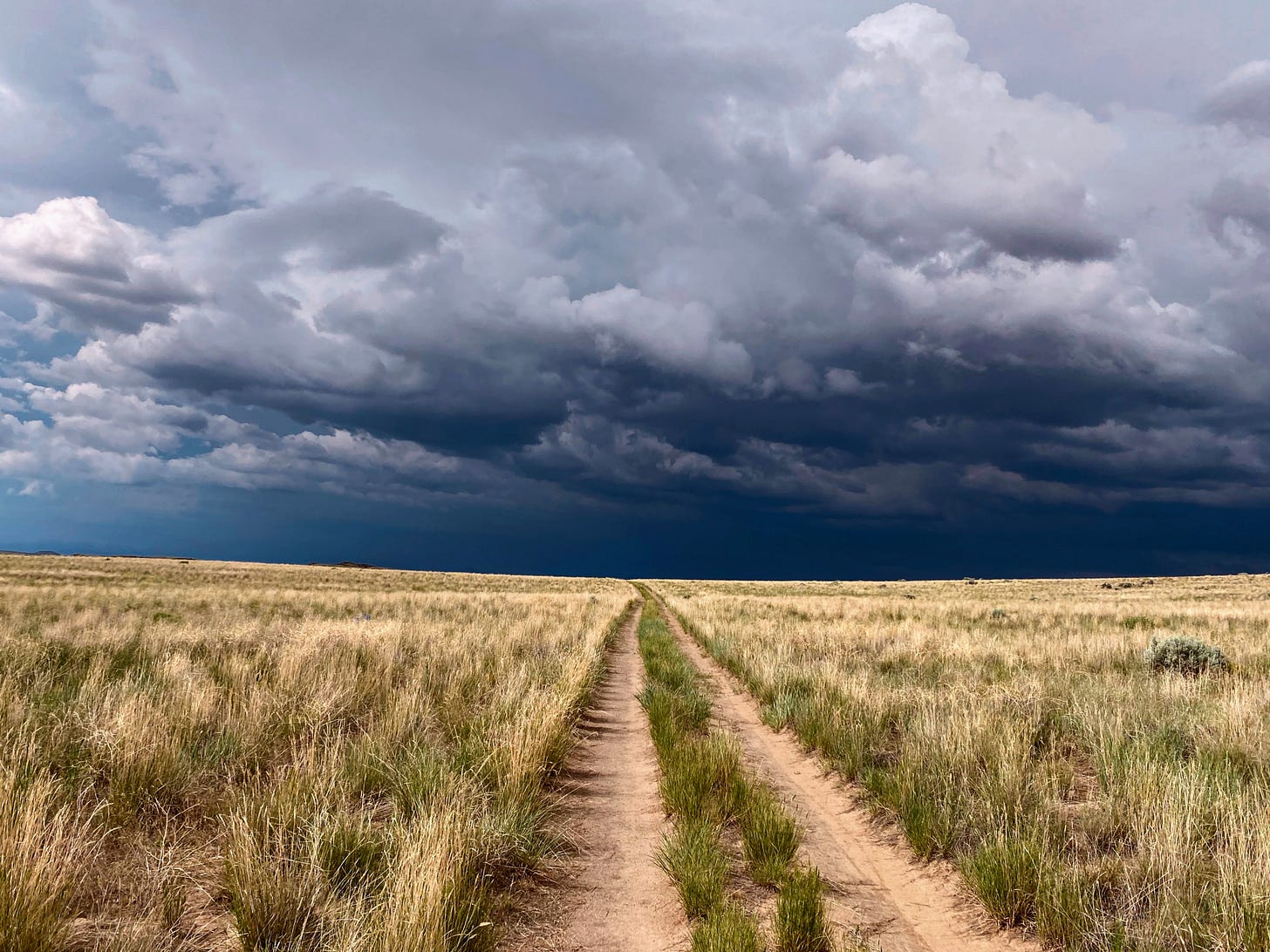

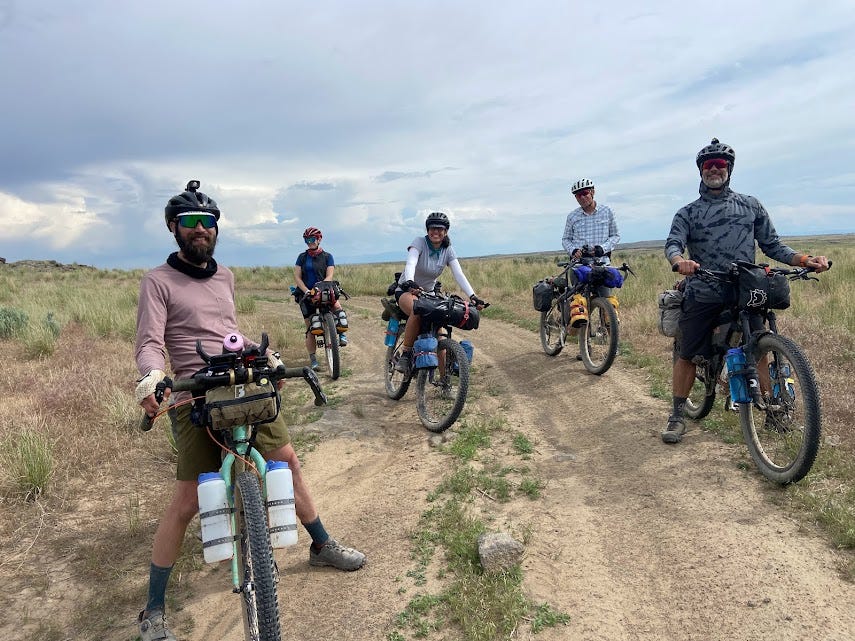
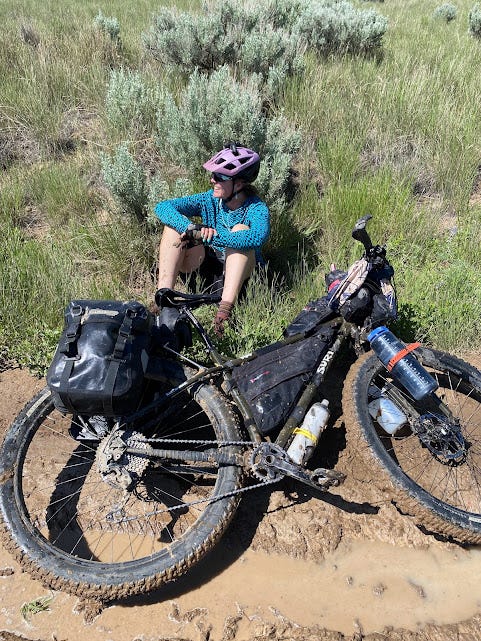

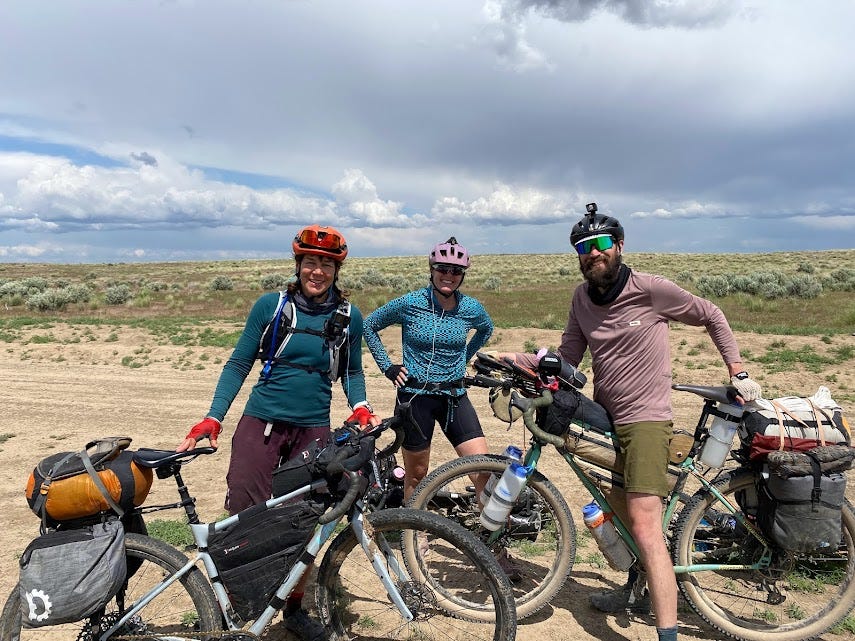
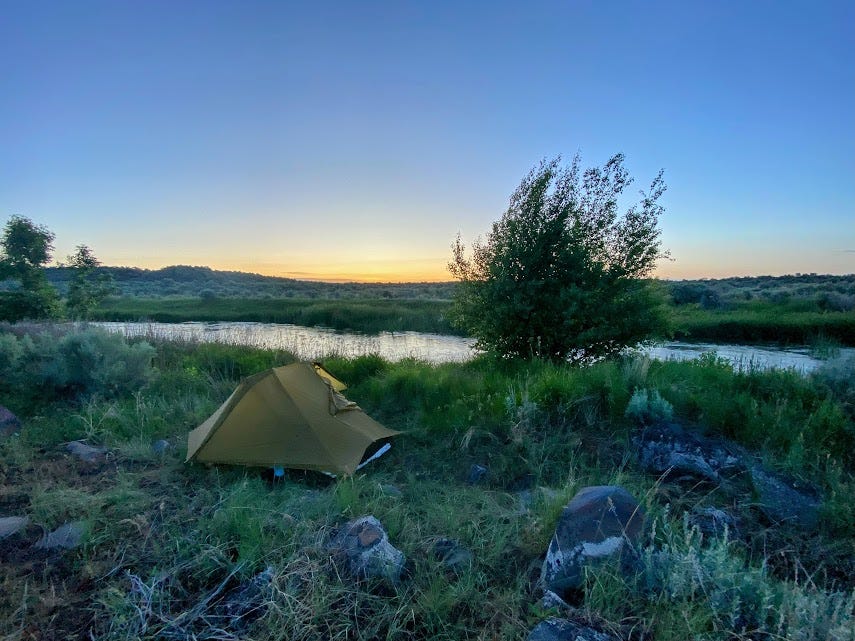
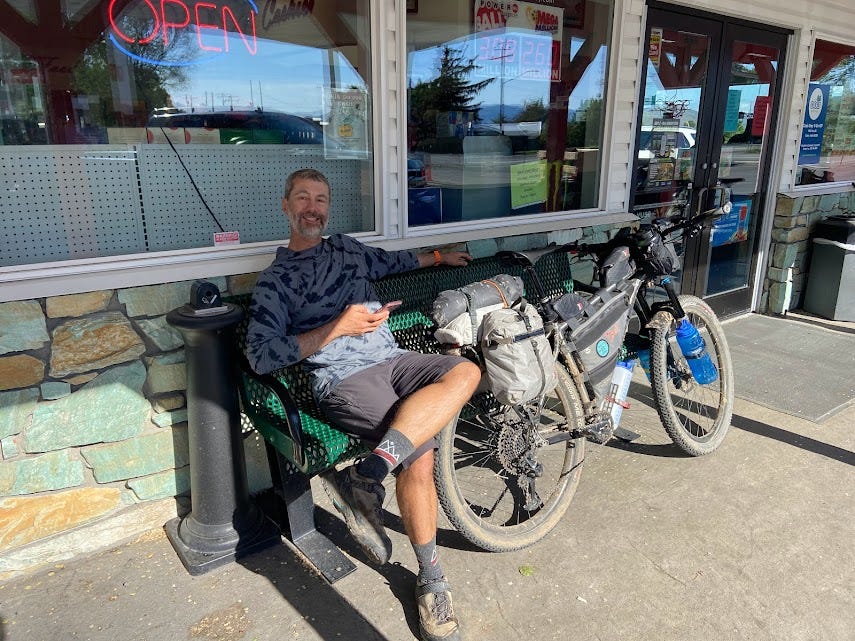
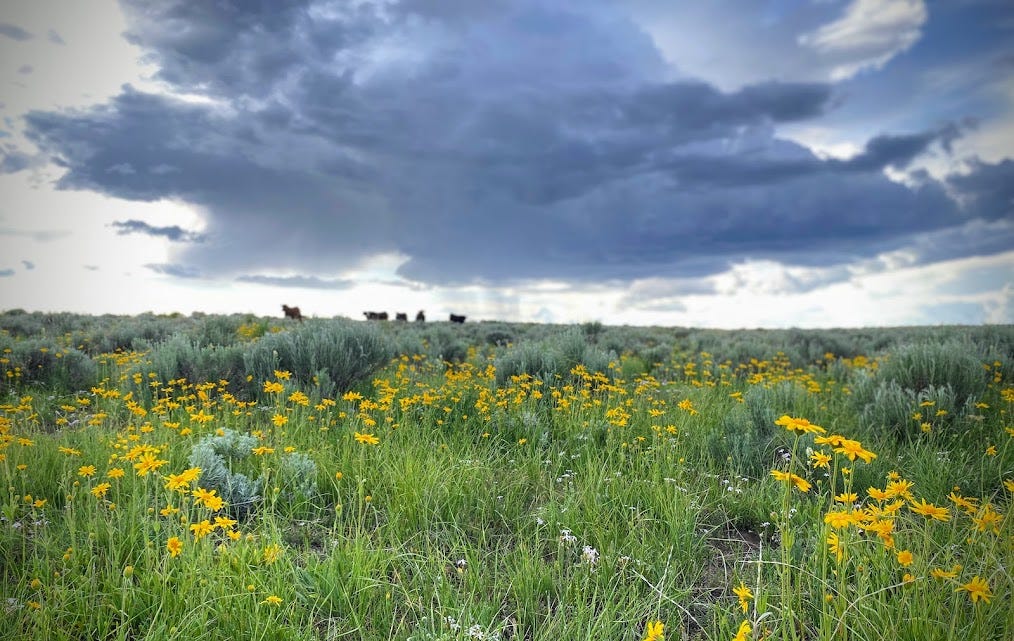



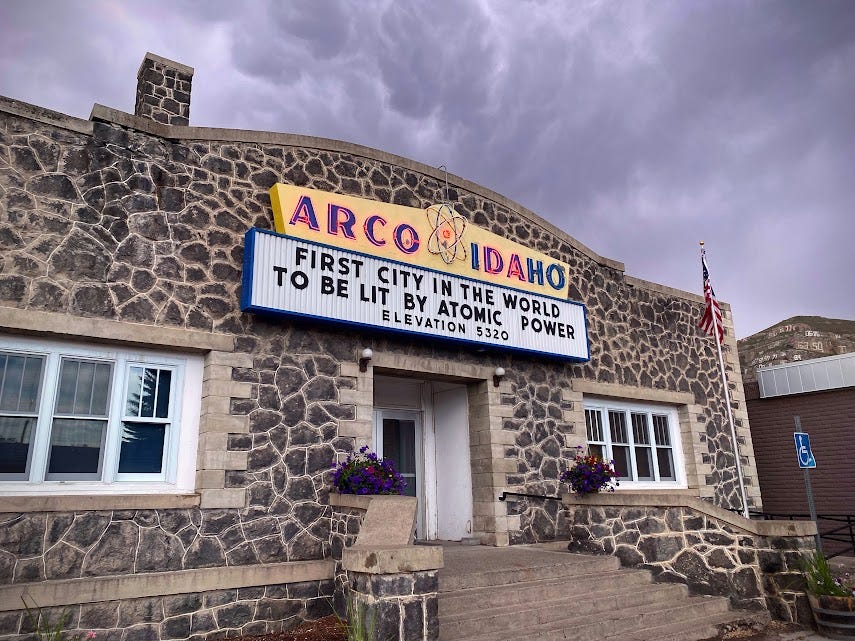


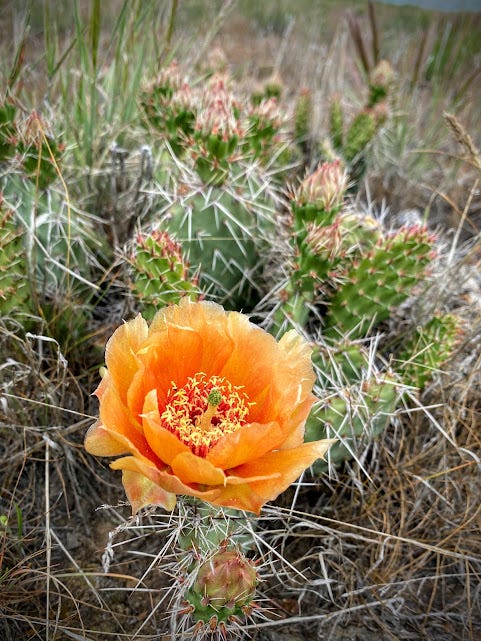
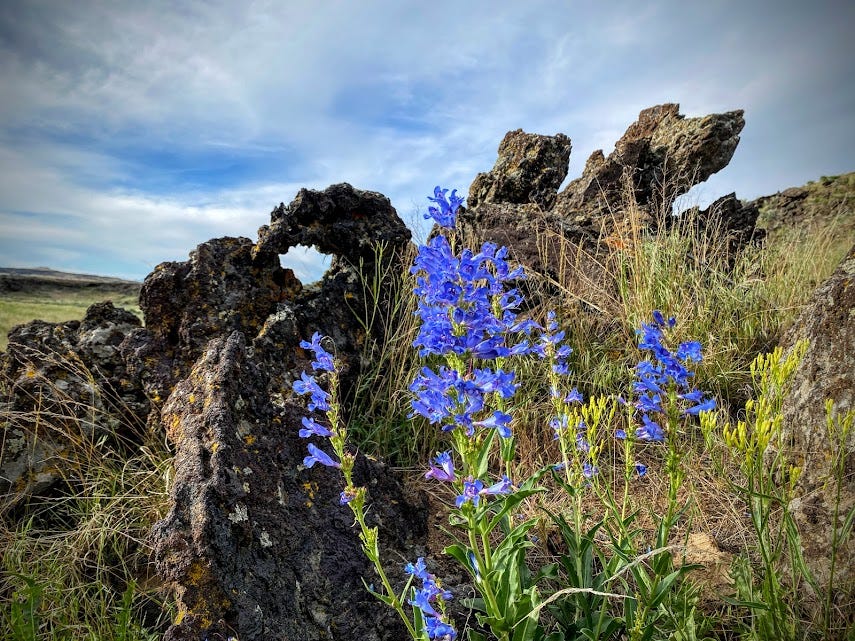


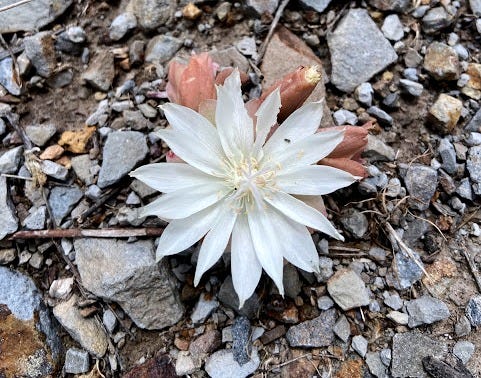
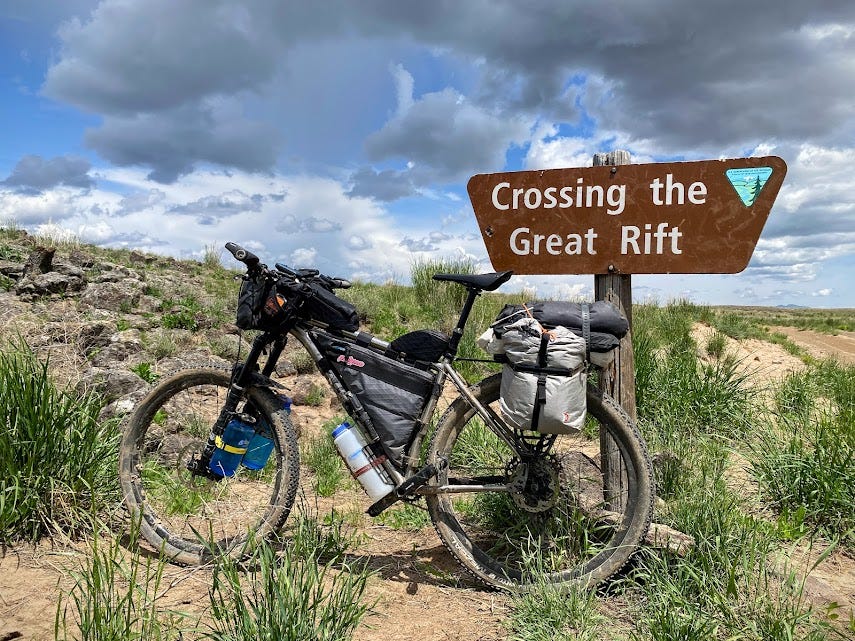
Fun! The FB event referenced SubStack for more details for upcoming rides - where do we find that?